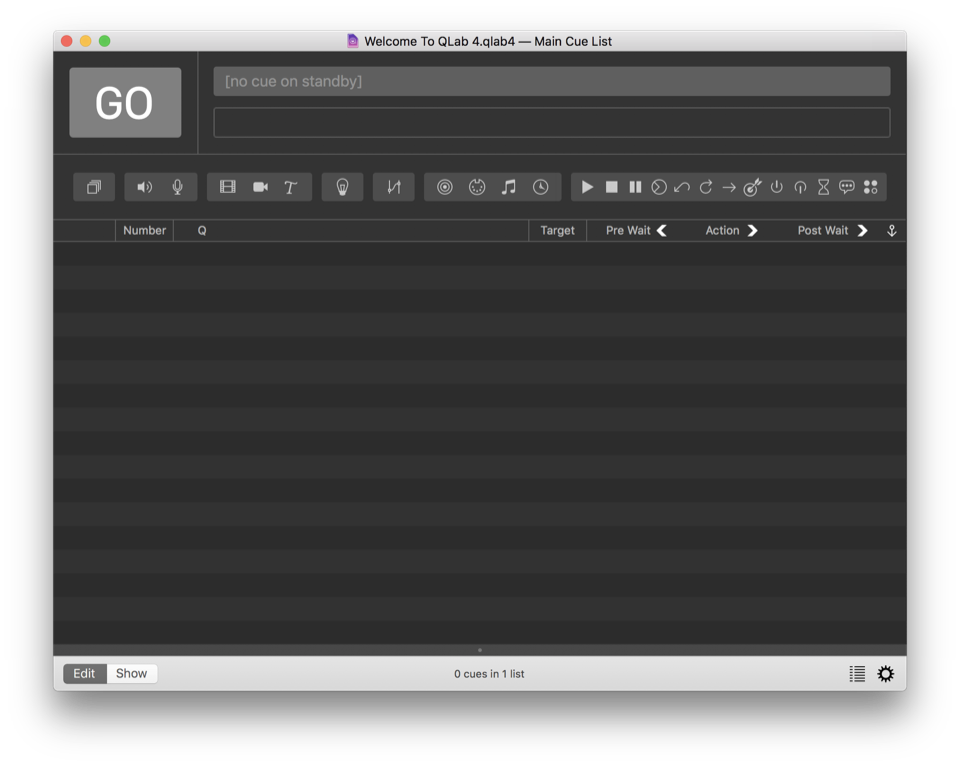

And that kind of simple human typeable control is still common today here's an animatronic controller I just got firing from Medialon Manager last week (I'm doing a lot of haunted house upgrades this summer). That simple protocol is very easy to test, use and program, and was a big improvement, from my perspective, over things like the then common Sony 9 Pin control scheme, a three byte binary message with a check sum. I've long been a fan of simple, human-typeable, ASCII based control messages, back to the days of the Pioneer Laser Disc player, which would take simple commands like "pl" for play, or "st" for still (each just followed by cr/lf). My primary case for simple ASCII-based control messages came down to this: I went back and forth about this in a fascinating exchange with Figure 53's founder and lead developer, Christopher Ashworth you can read the whole thing here.

Qlab ipad how to#
(Medialon's Eric Cantrell figured out how to automatically frame an OSC "Go" message with this syntax: Manager (OSC_String_to_Send = "/cue/" + QNumberString + "/start" + ("!00" * (5-Length(QNumberString))) + ",!00!00!00!0A!0D") ) For example, to tell QLab to Go on the next cue in the workspace using OSC, you would have to send "/go 0x00 0x00, 0x0A 0x0D" The /go is the main OSC "address", the null octets (0x00) are there to pad out the address name to the required multiple of four octets, the "," character is the start of arguments for this address (there aren't any for this address), and then the 0A and 0D are Carriage Return/Line Feed. None of this is a big deal for a computer to handle, but it makes the construction by humans of simple strings for control kind of complicated. For example, it needs its messages padded out to multiples of four octets, and you have to handle arguments for messages in a specific way, etc. OSC, though, is kind of complicated overkill for the kinds of simple ASCII-based control I prefer and have written about before. Figure 53 implemented Open Sound Control (OSC), which is a great protocol for things like fetching and managing lists of cues for the QLab remote control IPad app. Change display geometry for video, text, and camera cues.The release of Version 3 of the widely-used, Mac-based sound effects playback program QLab from Figure 53 brought with it something I've been waiting for for a long time: controllability over IP. Adjust audio levels and patches for audio, mic, and video cues. Edit basic properties for all cues, such as name, number, notes, color, armed, flagged, etc. Enable "Read-Only Mode" to follow along without worrying you'll accidentally trigger a cue.
Qlab ipad windows#
Open multiple windows on iPad to view workspaces side-by-side on one screen. Updates in QLab are instantly reflected in QLab Remote and vice versa. Automatically finds any QLab workspace on the network. Optional In-App Purchases are available to unlock show control, editing, and light tools features.
Qlab ipad free#
QLab Remote is free to use in "Read-Only Mode", which allows you to view a workspace & follow along worry-free and also includes the unlimited ability to flag cues & edit cue notes. Change the geometry of a video cue from the stage. Get out of the booth and edit your QLab workspace from wherever you are. Some features require a specific minimum version of QLab 4 or 5. QLab Remote requires a connection to QLab 3.0 or later.
Qlab ipad software#
QLab Remote is the official iOS companion app for remote control of QLab, the award-winning live show control software for macOS.


 0 kommentar(er)
0 kommentar(er)
